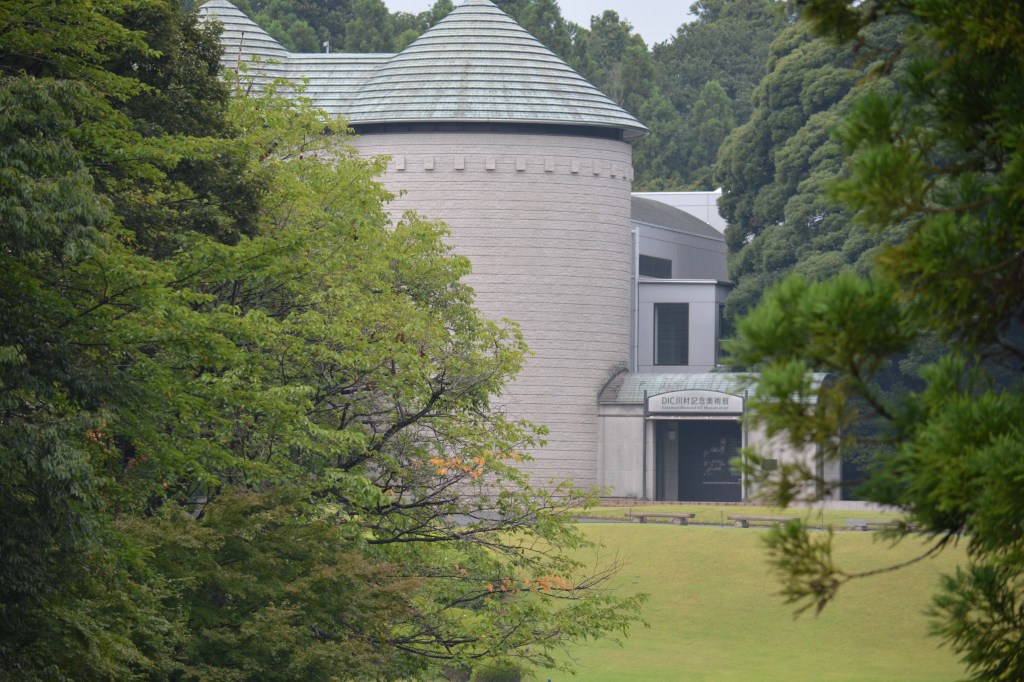Hong Kong-based activist fund Oasis Management has criticized Japanese chemical company DIC Corporation for choosing to relocate the Kawamura Memorial DIC Museum of Art to the International House of Japan (IHJ), a private members’ club in Tokyo.
The move includes an extensive collection of valuable artworks, including seven of Mark Rothko’s “Seagram Murals.”
Oasis, a major shareholder in severely indebted, loss-making DIC Corp – which owns the now-closed museum – said IHJ has “close ties” to DIC Corp’s chairman, Yoshihisa Kawamura. In a public statement released last month, Oasis called the move “highly inappropriate” and accused DIC Corp of attempting to “deprive shareholders of their rightful assets [by transferring] wealth and/or control of the assets to an inner circle of people and organizations under Kawamura’s influence.”
The activist fund has subsequently urged all DIC Corp shareholders to vote against the company’s CEO and chairman, Takashi Ikeda, who Oasis said “led the series of decision making.” Oasis has also urged shareholders to vote for its proposal “to amend the articles of incorporation to enhance monitoring of related party transactions.”
In August of last year, ARTnews reported that DIC Corp was reevaluating the future of the museum. In December, the company announced that its board of directors had decided to “downsize and relocate” the institution, which closed its doors on April 1 and is located 25 miles northeast of Tokyo. Its collection includes paintings by Cy Twombly, Pablo Picasso, Rembrandt, Claude Monet, Jackson Pollock, Andy Warhol, and Robert Ryman.
In a press release published December 26, DIC Corp said that the downsizing plan would see it sell 25 percent of the 384 works in the museum that it owns. The total value of DIC-owned works is $77.5 million, the company said in August. The museum would then relocate to “a facility in Tokyo that is accessible to many stakeholders and where the works of art can be more easily exhibited to the public.”
Last month, DIC Corp announced that it had signed an agreement with IHJ to move the Kawamura Memorial DIC Museum of Art to the private members’ club. It said that all seven of Rothko’s “Seagram Murals” will be housed in “a dedicated Rothko Room exhibition space in the IHJ’s new West Wing, which is currently under construction.”
“DIC and IHJ will operate the new Rothko Room together as a joint public interest program that aims to promote private-sector diplomacy and international cultural exchange through the power of art and architecture,” the company said. “In working to successfully implement this joint public interest program, DIC and the IHJ will seek guidance and cooperation from leading experts and advisors in the visual arts and architectural fields.”
Ikeda, DIC’s CEO and president, said in the press release that he was “delighted” with the deal.
On its website, IHJ describes itself as “a private, nonprofit organization incorporated in 1952 with support from the Rockefeller Foundation and other private institutions and individuals for the purpose of promoting cultural exchange and intellectual cooperation between the peoples of Japan and those of other countries.”
IHJ chairman James Kondo said in a press release, “It is my hope that the dedicated Rothko Room exhibition space… will serve to encourage quiet reflection among people who may be facing discord, expand empathy, and deepen mutual understanding.”
In the same press release, Rothko’s son, Mark, said, “With its new location in Tokyo, that legacy will continue, with even more visitors able to appreciate its beauty. We are especially grateful that the Rothko Room, an alluring meditative space with seven paintings from the iconic Seagram Murals series, will be recreated in the new museum.”
Related Articles

However, Oasis, which has a reputation for demanding aggressive changes at Japanese companies and owns 11.5 percent of DIC Corp’s shares, expressed increasing concern “about the corporate governance deficiencies caused by Mr. Kawamura’s reign and the conflicts of interest that his position has created.”
The activist fund said Kawamura “appears to be a member of IHJ” and is “very close” to the private members’ club. “Kawamura is a founding member of the Asia Society Japan (ASJ), which is an organization with a very close relationship with IHJ. He is also a committee member of ASJ’s Arts and Culture Committee,” Oasis claimed.
Among the reasons listed by Oasis to explain why it was “extremely concerned” by the partnership, include: “Kawamura is a founding member of the Asia Society Japan (ASJ), which is an organization with a very close relationship with IHJ”; “ASJ has been headquartered in the I-House Building [where IHJ is located] since its founding, i.e. IHJ and ASJ have the same address”; and “The Kawamura Arts and Cultural Foundation, a foundation controlled by the Kawamura Family, has held multiple gatherings at the I-House Building.”
Oasis added that it is “also concerned about the ‘Experts and Advisors’ that DIC and IHJ have selected ‘to seek guidance and cooperation’ on this effort to relocate the artworks to the I-House Building. Many of the so-called ‘Experts and Advisors’ seem to be close friends of Mr. Yoshihisa Kawamura.”
DIC Corp, IHJ, and Oasis did not respond to ARTnews’ request for comment.

